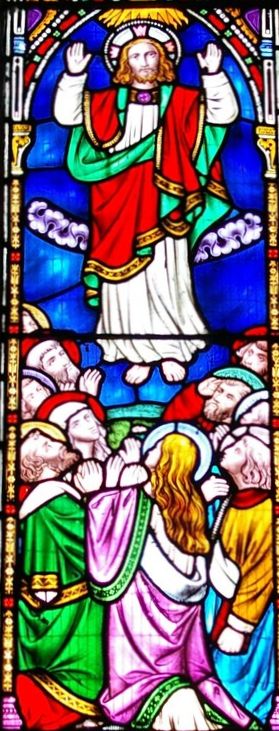
image (c) Tiger licensed for reuse under Creative Commons Licence
Today’s hymn from Sing Praise is ‘Come, see the Lord in his breathtaking splendour’ by Martin Leckebusch, several of whose hymns we have sung this year. This one is the first of just two hymns set in the book for Ascension Day (tomorrow, 13 May), but as only one verse of it is specifically about the Ascension it could be sung at any time of year as a statement of faith in Jesus.
It comes with its own tune ‘Barnard Gate’ but John picked the tune Epiphany usually associated with the words ‘Brightest and best of the sons of the morning’. As both hymns are worship songs about Jesus, that seems a good choice. But whereas ‘Brightest and best’ is in the second person, addressed to Jesus, these words are in the slightly more distant third person form, making it a hymn about Jesus.
The first and last verses have the same two opening lines: “come, see the Lord in his breathtaking splendour: gaze at his majesty, bow and adore!” which point us metaphorically upwards to the heaven to which he ascended. In between are three contrasting verses about his birth and earthly ministry, death on the cross (from which he “emerged as victor, [but] still from the nails and the spear he is scarred”), and the ascension that we will be celebrating tomorrow. This fourth verse ends with a series of honorific titles: “Hail him the First and the Last, the Almighty, Jesus our Prophet, our Priest and our King”.
That last phrase takes us back to Epiphany, when the magi (in legend, the ‘Three Kings’) gave gifts that foretold this threefold calling of Jesus as religious teacher, representative of humanity before God (which is what ‘priest’ means in this context) and rightful ruler of the earth. The ‘good teacher’, the miracle worker who was crucified, and the reigning Christ are one and the same, a truth at the heart of our faith but one about which we keep needing to remind ourselves.
In one way this hymn could (rather unkindly) be described as a “Cook’s Tour” of Jesus’ life, and as such is rather typical of Ascension Day hymns: if the Ascension of Jesus is the culmination of the events of his life and work and marks the point at which he is finally acknowledged and given the glory due to him, then a hymn would naturally survey his life chronologically, and conclude with his Ascension. So I agree with all the words and find the hymn helpful and easy to sing, but I am not sure it is very original in thought.
By contrast, Christopher Idle’s hymn (tomorrow) sees the Ascension more as the culmination of the QUALITIES and MINISTRIES of Jesus rather than the events of his life, and so takes a non-chronological survey; and I was much more moved by it as a result. Of which more anon … .
But it does have to be admitted that Martin’s hymn also makes a feature of Jesus’ titles, and I was also quite struck by the way Martin put his thoughts on the resurrection – although Jesus emerged victorious, yet he was still scarred and pierced in his risen state. A true Suffering Servant.
About the tune, I would guess Martin wrote it for “Epiphany Hymn” and the words are very suggestive of that tune, which is why I picked it. But I do see why the book would want to offer an alternative, not least because if one wanted to use the hymn more generally in a service about coming to see Jesus, it would be useful to be able to use it alongside “Brightest and best”, and a tune with a different rhythm (which John Barnard’s tune has) would come in very handy.